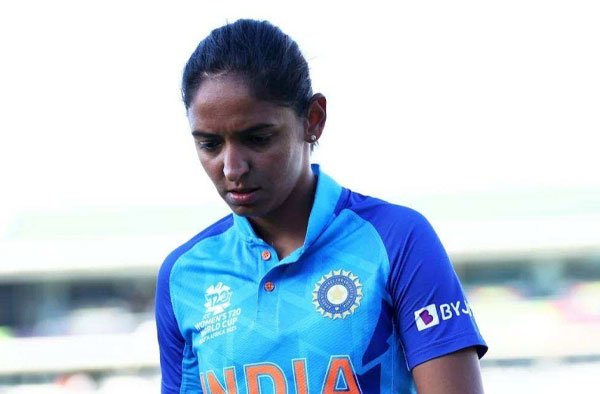Cricket is not just about elegant cover drives and pinpoint yorkers—it’s also a game of discipline. Players are expected to maintain a certain level of conduct on the field. But what happens when they cross the line? That’s where the Cricket Demerit Points System comes into play.

If you’ve ever wondered how cricket’s disciplinary system works, this article will break it down for you in simple terms. Let’s dive into how players get penalized and what it means for their international and domestic careers.
What Is the Demerit Points System in Cricket?
The Demerit Points System is a method introduced by the International Cricket Council (ICC) to ensure that players maintain sportsmanship and discipline during matches. Essentially, it acts as a warning system that keeps track of a player’s on-field behavior.
Here’s how it works:
– If a player commits an offense, they receive demerit points.
– These points stay on their disciplinary record for 24 months.
– Once a player accumulates a certain number of demerit points, they face suspensions.
But not all offenses are the same. Some offenses carry more weight than others, which means the number of points a player receives depends on the severity of their actions.
How Do Players Get Demerit Points?
To understand how players accumulate penalties, let’s look at the main types of offenses and their corresponding punishments.
1. Level 1 Offenses (Mild Violations)
These are minor infractions, but they are still taken seriously. Actions like excessive appealing or showing mild dissent to an umpire’s decision fall under this category.
Punishment:
– 1 or 2 demerit points
– A fine ranging from 0-50% of the match fee
2. Level 2 Offenses (Moderate Misconduct)
These offenses involve stronger verbal abuse, intentional physical contact, or continuing dissent in a disruptive way.
Punishment:
– 2 or 3 demerit points
– A fine of 50-100% of the match fee
– A possible one-match suspension
3. Level 3 Offenses (Serious Violations)
If a player physically intimidates an umpire, seriously abuses another player, or causes a major disruption in the game, they face heavier penalties.
Punishment:
– 4 or 5 demerit points
– Suspension for a few matches (typically between 2-4 matches in Tests or ODIs)
4. Level 4 Offenses (Severe Misconduct)
These are the worst possible offenses, such as threatening an umpire, assaulting a player, or bringing the game into severe disrepute.
Punishment:
– 5 or more demerit points
– A large suspension (could be matches or even years, depending on the severity)
– In extreme cases, a player might be banned from international cricket altogether
What Happens When a Player Accumulates Too Many Points?
The demerit points system operates on an accumulating basis. This means that if a player repeatedly breaks the rules, their penalties become harsher.
Here’s what happens when a player reaches certain thresholds:
– 4 demerit points: A one-Test match ban or suspension from two white-ball matches (ODIs or T20s)
– 8 demerit points: A two-Test match ban or a full four-match suspension in limited-overs cricket
– 12 demerit points: Severe action, including an extended ban or further disciplinary measures
Since these points stay on a player’s record for 24 months, accumulating multiple offenses can lead to long-term damage to their career—especially if they are repeat offenders.
Why Does This System Matter?
Some fans might wonder, “Isn’t cricket a game of passion? Why penalize players for showing emotion?” While competitive aggression is natural, the ICC wants to maintain a level of respect on and off the field.
This system matters because:
- It ensures that a respectful environment is maintained at all times.
- It prevents unnecessary conflicts between players and umpires.
- It protects the spirit of cricket, ensuring the game doesn’t turn into chaos.
- It holds players accountable for consistent bad behavior.
Famous Instances of Players Receiving Demerit Points
Even some of cricket’s biggest stars have found themselves on the wrong side of the system.
- Virat Kohli – Known for his passionate nature, he has received demerit points in the past for aggressive send-offs.
- Ben Stokes – The England all-rounder has had his share of incidents involving excessive appealing.
- David Warner – Involved in heated exchanges with opponents, leading to disciplinary actions.
They might be world-class players, but even legends have to follow the rules!
How Can Players Avoid Demerit Points?
For players who want to stay on the right track, here are some easy ways to avoid trouble:
- Respect the umpires’ decisions, even if they seem unfair.
- Channel frustration into performance rather than verbal arguments.
- Play hard but fair—there’s a difference between aggression and unsportsmanlike conduct.
- Let the game’s natural spirit take precedence over personal disputes.
By sticking to these principles, players can ensure they stay in the game longer without facing unnecessary suspensions.
Final Thoughts
The Demerit Points System in cricket exists to strike a balance between competitiveness and fair play. While fans love fiery rivalries and intense moments, discipline is what keeps the game enjoyable for everyone.
So, next time you see a player getting fined or suspended, you’ll know exactly why it happened—and perhaps, you’ll appreciate the role of umpires and officials a little more! After all, cricket isn’t just about scoring runs and taking wickets—it’s about maintaining the true spirit of the game.
What do you think about the demerit points system? Is it fair, or too strict? Drop your thoughts in the comments!